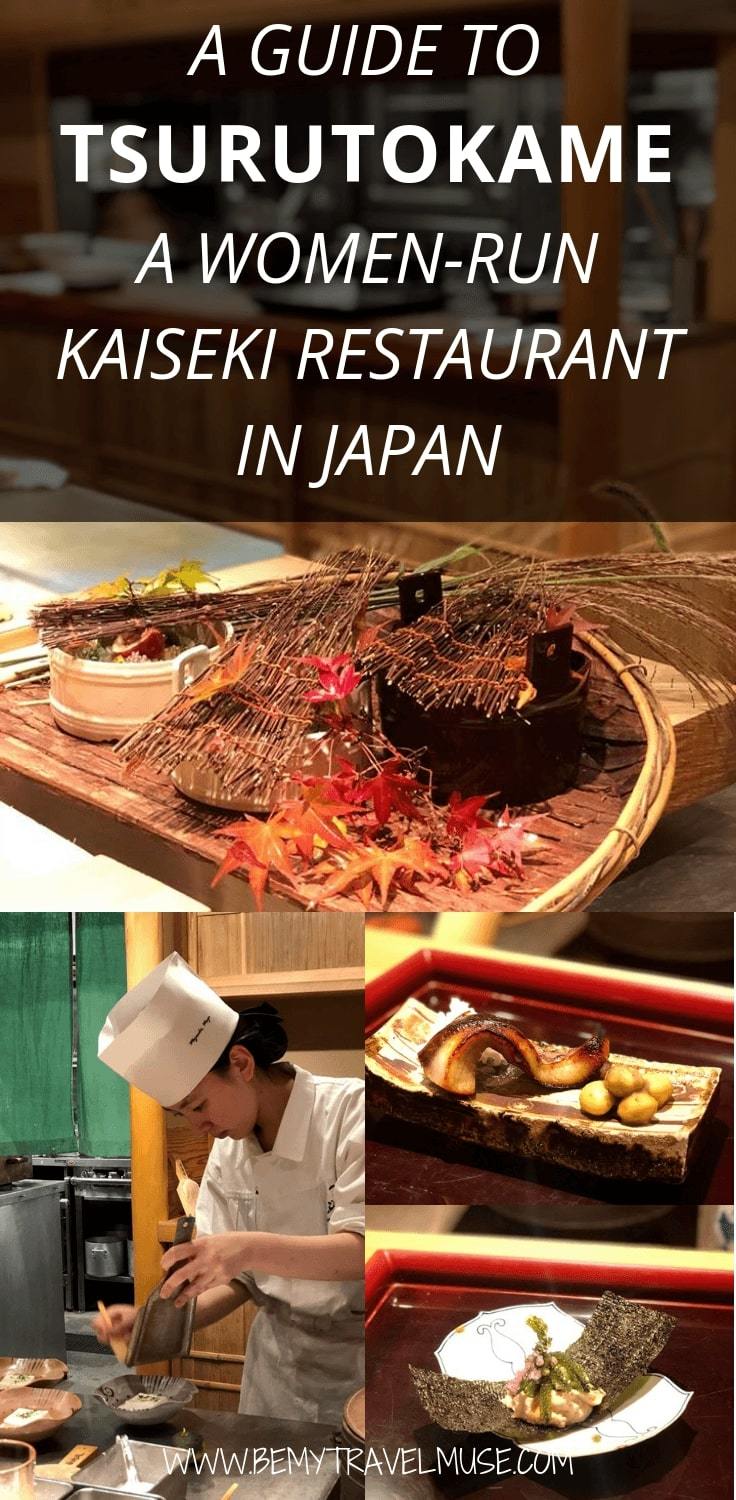
The chef poured the sake into my host’s glass until it spilled over the brim and into a curved bowl at the base. Though clearly intentional, it was a gesture I had never seen before. When I asked why, I was told that abundance and the possibility of more is always welcome, and who can argue with that?
As a perfect mirror to this, abundance is the inspiration behind the name of Tsurutokame, which translates to crane and turtle. The animals symbolize longevity and luck, and after experiencing the culinary delight of Tsurutokame I have no question that both are in the cards for this all-female run restaurant in the high-end Ginza District of Tokyo.
So what makes this restaurant so special? Apart from the fact that it is one of the best dining experiences one can have in Tokyo, it is completely run by a team of seven female chefs serving a Kaiseki traditional multi-course dinner. This is the epitome of Japanese haute cuisine and is considered the highest-level genre of restaurant in Japan. Kaiseki is not just a meal, it is an art form.
Why All-female Run Restaurants are a Rarity in Japan
To fully appreciate why this restaurant is so cutting edge, let’s look at the glass ceiling that women are up against in this profession, particularly in Japan.
When the Wall Street Journal asked Yoshikazu Ono, son of famed sushi chef Jiro from the documentary, Jiro Dreams of Sushi, why women can’t be sushi chefs, he answered, “it is because women menstruate.” Menstruation apparently causes an imbalance in one’s ability to taste. Another popular myth is that women have a “higher core body temperature”, and that wearing makeup and perfume affects our sense of smell.
Right.
Due to these false beliefs, it is rare to see a female sushi or Kaiseki chef at all, and almost unheard of to see a woman leading a kitchen in a reputable restaurant in Japan.
This is what the chefs of Tsurutokame are up against, and yet they’re successful despite the odds.
Tsurutokame’s Story
Harumi Mikuni, and her husband, Osamu Mikuni, are seasoned restauranteurs and the driving force behind Tsurutokame with a 100% female-only kitchen. It’s the couple’s brilliant way to grow talented women into leaders and earn their spot in a male-dominant industry. When asked why they didn’t simply place a female chef at the helm of one of their other 10 restaurants, they said that male chefs are unlikely to respect a female as a lead chef. Therefore, the only way is for the rest of the chefs working under her to be female as well.
However the couple believes in the possibilities and talents of female chefs, and this restaurant is an experiment to see if women can find their place in Japan’s elite culinary scene. In an interview with Forbes, Mikuni said, “My husband and I have always felt that women, while lower in the eyes of society and always behind the scenes, can perform well or same or even better than men.”
Based on the popularity of the restaurant and the often months-long waitlist, their experiment seems to be working.
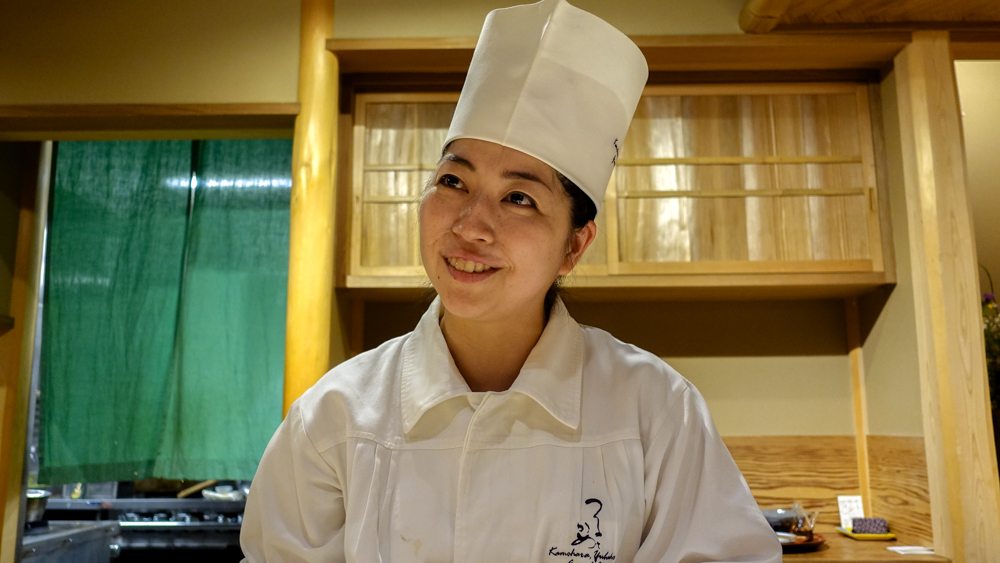
The chefs of Tsurutokame, led by 35-year-old head chef, Yubako Kamohara, are all being groomed by the Mikunis – not only as chefs, but as well-rounded human beings. They live together, shop for ingredients in the mornings, prep together, go on field trips to study languages and art, and work together on a daily basis to curate the menu of the day, which in true Kaiseki style, changes every night.
The Experience of Dining at Tsurutokame
In typical Kaiseki style guests have a front row seat to the action. The restaurant is set up as a long bar with chairs all around it which accommodates up to 14 guests. During the entirety of the multi course meal, diners have the opportunity to observe and even speak with the chefs. One of my favorite things about this restaurant was how interactive, approachable, warm, and friendly the women were. The experience is exclusive and intimate.
Yubako Kamohara, the lead chef, seemed to be leading an orchestra. Behind the kitchen counter opposite me was Kamohara, who was working her hands on the tuna whilst chit chatting with the guests as well as directing the rest of the kitchen simultaneously.
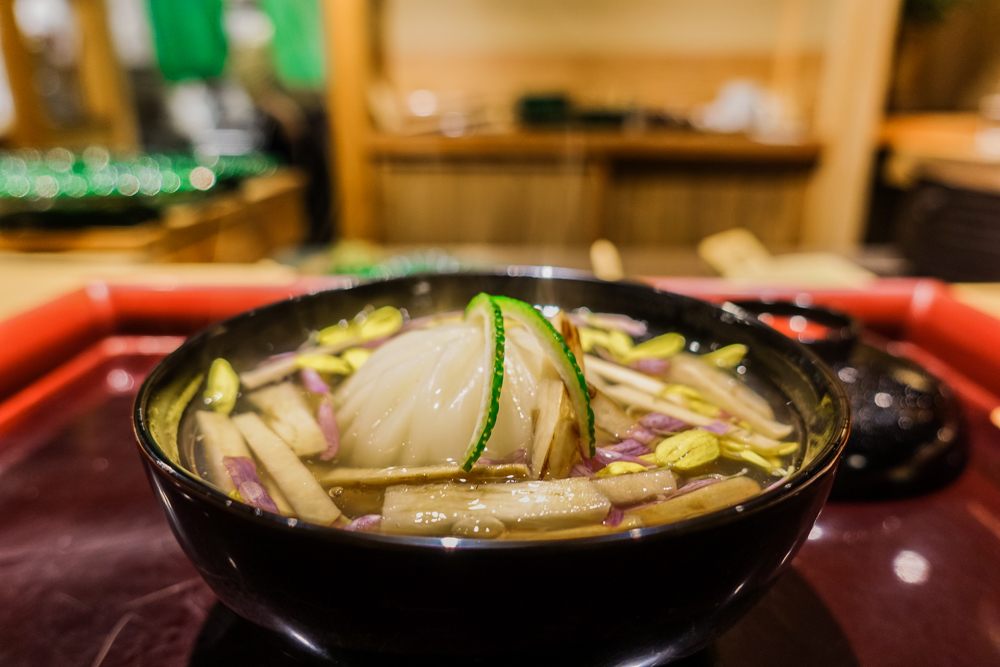
The restaurant has a light, easeful energy, and instead of feeling slightly intimidated in the presence of the chefs, I feel welcomed into their personal kitchen.
Now let’s talk about the food, which I’m still salivating over.
The menu is varied and seasonal, only using the freshest ingredients. I went in October, and experienced plates with offerings and adornments including autumn leaves, several kinds of seaweed, fresh fish, edible flowers, and tofu in just about every form imaginable. The food is as inventive and inspired as it is delicious. The chefs also completely adopted a vegan menu for me while serving the rest of the restaurant their traditional menu. They put just as much effort into my food as everyone else’s and it really showed. This alone blows me away, since many high-level chefs will simply refuse a vegan diner or any kind of special order.
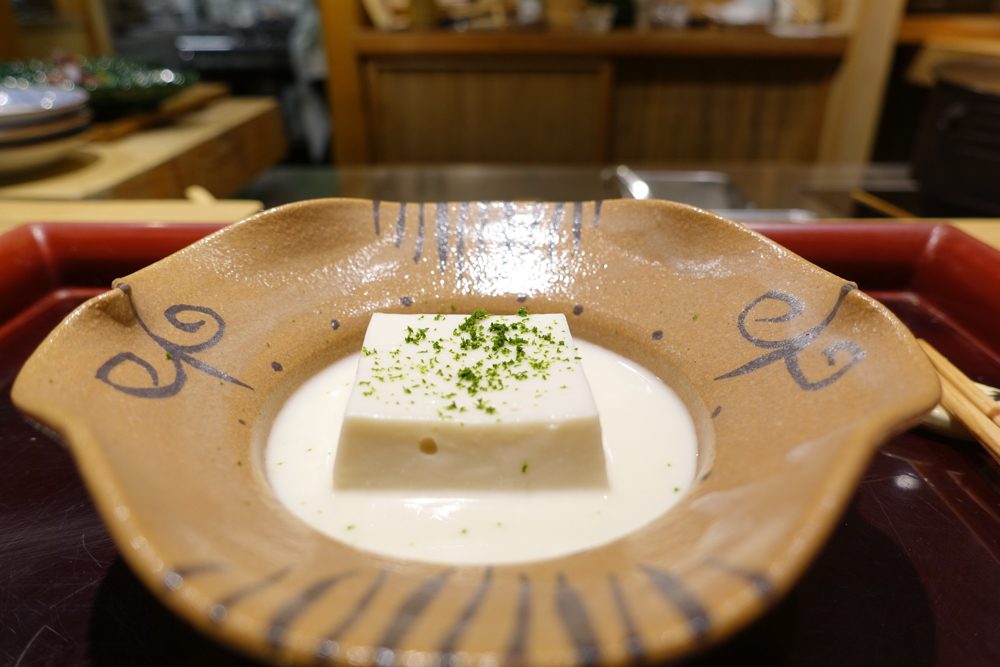
The cuisine was a mixture of textures and flavors I couldn’t have previously imagined. Each dish had so many layers that it kept surprising, offering a different mix with every scoop of my chopsticks. Each bite was a new experience by design.
Imagine tofu that tastes like cream cheese, tuna that looks and tastes like beef tartare (according to my friend who had the omnivore’s menu), seaweed with the consistency of panna cotta, aromatic flowers to complement a bite here and there, and a traditional matcha green tea finish. It’s a symphony of textures and flavors that each have their place in the dishes, and it’s clear every detail has been thought of.
Additionally, in contrast to much of the world’s fine dining, it was high cuisine that was healthy without even trying – a byproduct of the fresh ingredients and the very nature of Japanese cuisine.
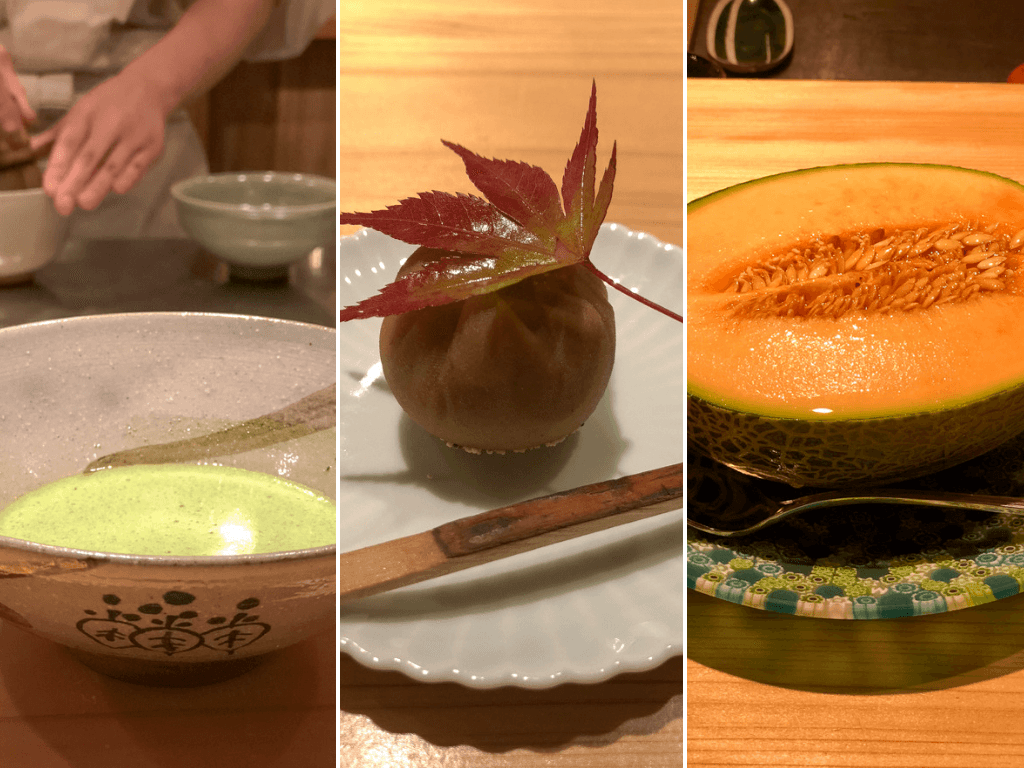
Experiencing Tsurutokame for Yourself
I’m happy to report that this restaurant is doing incredibly well, with a mixture of both male and female guests all enjoying the food and the atmosphere. With the aim to prove that women can be capable chefs, Tsurutokame delivers in spades. While genuine Kaiseki is an experience that’s unique to Japan, Tsurutokame is an experience that’s unique to Tokyo’s Ginza neighborhood and truly one of a kind.
Since it’s so popular, it’s best to book seats as early as you know you’ll be in Tokyo. I was told by our host, Ayako Yuki, that spaces book out up to a month in advance. Part of this is due to how economical the experience is at only 10,000¥ to 16,000¥, which is unheard of for Kaiseki, as well as how varied the menu is. Regular guests keep coming back because the experience is so different each time. To book your spot, visit the website here.
I was beyond inspired by this experience. It felt so incredibly unique and special – and it is. If you’re in Tokyo treat yourself to Tsurutokame. Support these amazing women who are living proof that anything the boys do, we can do just as well (or better).
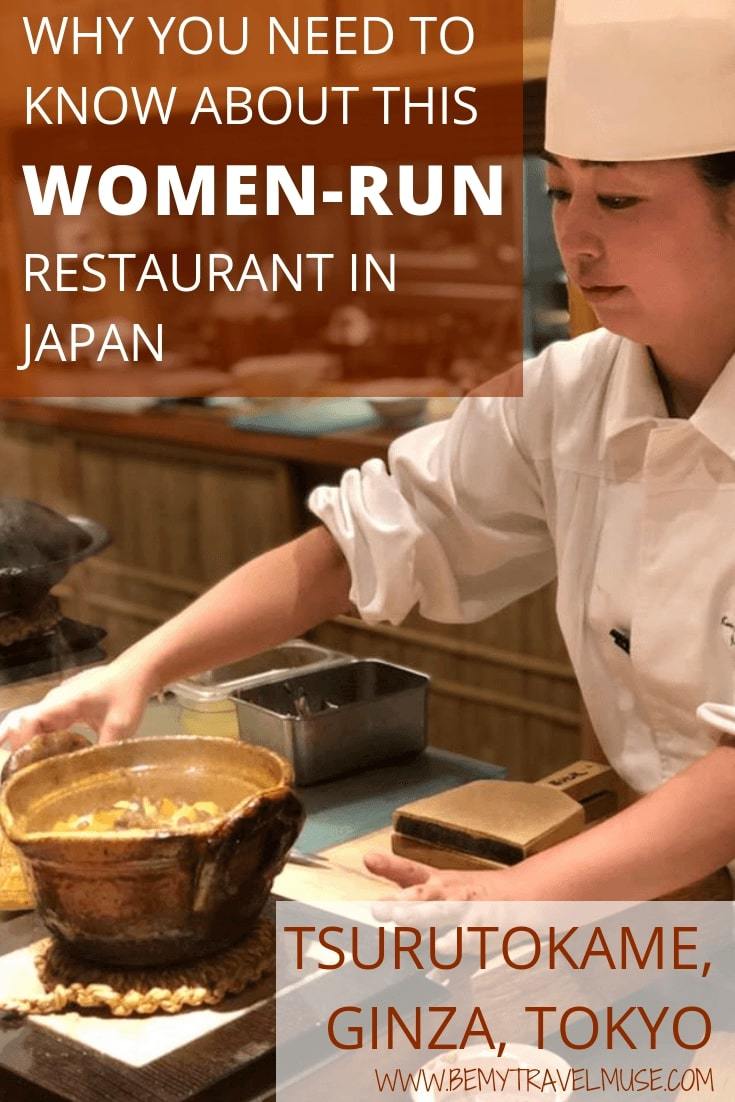
*In the spirit of full disclosure, I was invited to be a guest of Tsurutokame, however I was not asked to provide a favorable review. The thoughts shared here are genuine and reflect my personal experience.
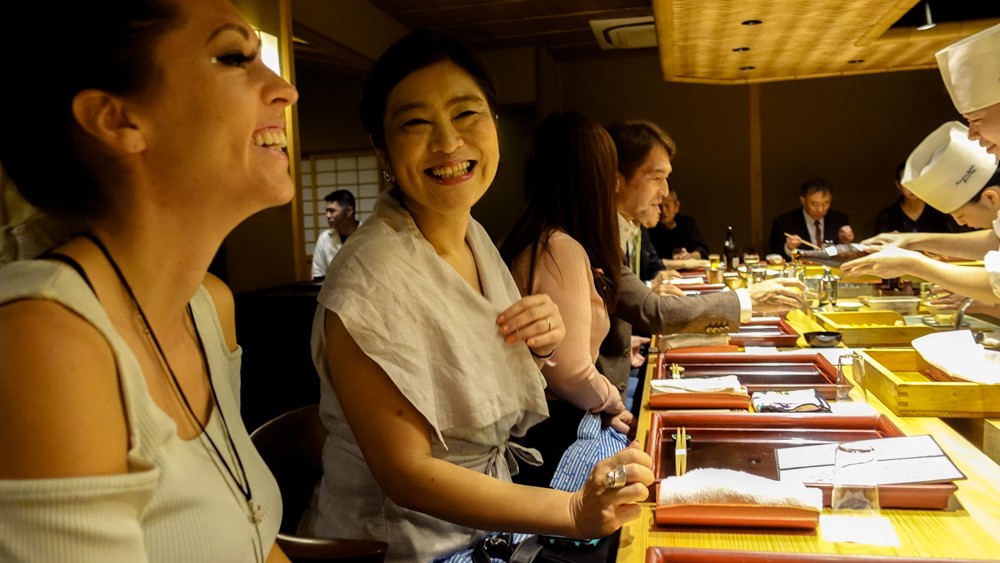
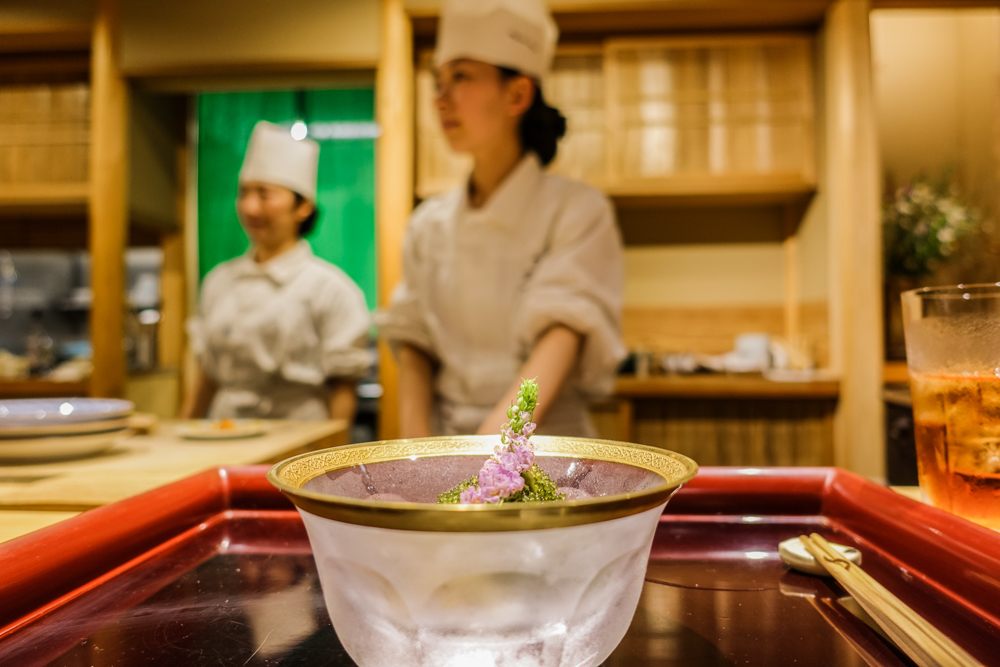
GG says
Hi Kristin: This is a great find. Several interesting things mentioned here, some unfortunate. First, society pushes that women “belong in the kitchen” and “cook and clean” and then when there is cooking outside in a restaurant, especially prestigious ones, they are “not good enough” or the work is too “strenuous” (being a chef requires standing an insane amount of time and 70+ hours of work per week) or they have a period. Some say it is about women taking care of the family but the truth comes out in articles like the Wall Street Journal (about control and prejudice). It is great that things are changing here not only in Japan but around many places in the world, more power to you all and to those hard working female chefs! Still some way to go in the U.S. for instance. I love how they treat their employees like a loving family at this restaurant.
The other things is about this post is about the cross cultural similarities, showing how we are truly much more alike than different. For instance, “The chef poured the sake into my host’s glass until it spilled over the brim and into a curved bowl at the base.” In Judaism, it is traditional before a festive meal especially, to fill your wine glass/cup past full and let it spill into the bowl to celebrate the overflow of joy and abundance.
On the flip side of the coin, the use of menstruation to exclude women from certain activities is also quite universal in terms of it as an excuse cross-culturally. In some cases blood is impure therefore women can’t participate in some religious ritual or even enter a religious sanctuary even if not in that part of the cycle. In some religious viewpoints, Eve is blamed for tempting Adam with the “apple” and menstruation was a punishment for sin so therefore a bad thing instead of part of the natural way of things. Thank goodness a lot of this is dropping off and proper interpretation of religious texts are replacing this nonsense! And apparently Yoshikazu and other chefs not just in Japan have another reason! Explain me this: If someone’s taste buds are off is an issue for a great chef why are there great head chefs out there that I have heard of that NEVER TASTE THE FOOD THEY PREPARE :).
One quick question: When they prepared your vegan meal, did they have the vegan food touch an area that ever gets cooked with meat? That would be an issue with me. I actually would eat certain fish, being pescetarian, but same issue. It sounds like to me they are so nice and compassionate that they would accommodate but curious how they handled it for you since the usually cook everything on those tables in front of you. They had tools to prevent cross contact in one Japanese restaurant here in my hometown (although when traveling I sometimes find vegan/vegetarian restaurants of this type), but wanted to know your experience. Thanks!
GG says
I watched the viGGdeo, it was very informative. I have never experienced any Japanese restaurant like that. It appears that they could accommodate anyone if they wanted to in this manner so no need to answer my question, the video took care of it. I encourage people to watch the video, it was neat to see and made me quite hungry. The lead chef’s smile was precious and the joy/satisfaction in your and Ashley’s faces makes me want to go there if I ever get to Tokyo. Hope this isn’t just a novelty and breaks barriers in terms of chefs and other professions in general.
Ava Mac says
Hi, nicely done and written, always great to find new information in your blog . so useful and practical for me.
Sevgilisikim.net says
Woow. Great. Thanks